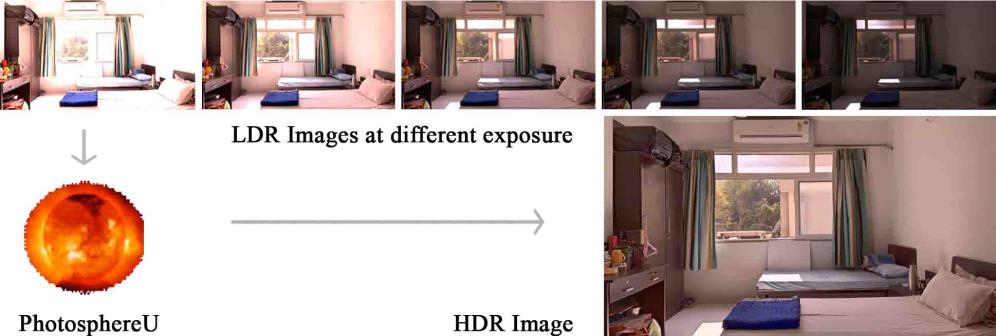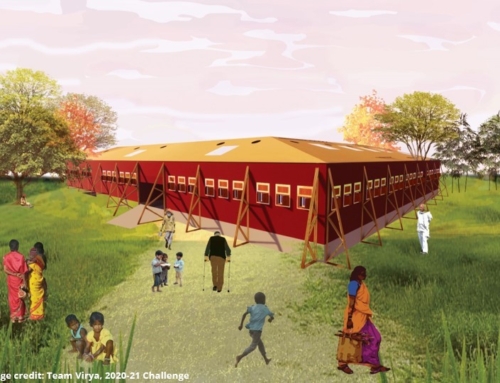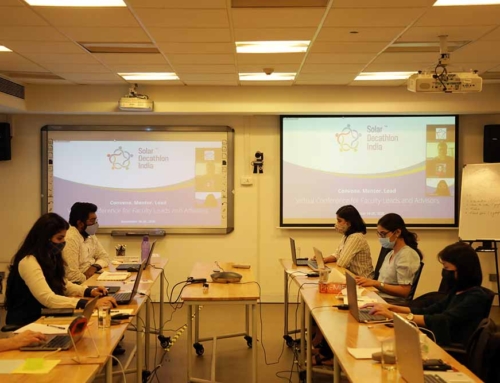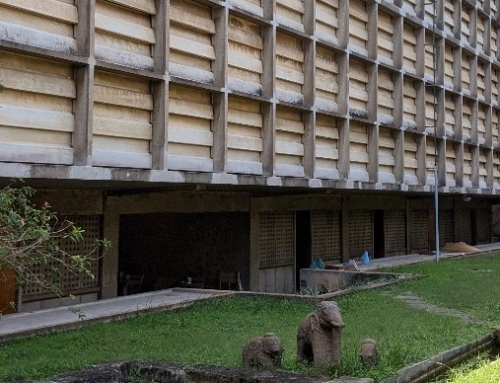November 24, 2021 | Amanda Thounaojam
Editor: Janani Venkatesh
We are often told that the light emitted from smartphones is harmful. But what if the light measuring capabilities of smartphones could help us measure visual comfort to improve health and wellbeing? We can conduct light measurements using smartphones and make meaningful decisions about the indoor lighting conditions in our buildings. This method involves High Dynamic Range Imaging (HDRI) with smartphone cameras as low-cost alternatives to high-end cameras and luminance meters.
Well-lit indoor spaces that allow the flow of ample daylight are at the heart of net-zero energy buildings. A visually comfortable space lifts the mood and productivity of its occupants and helps them experience better health. Daylight is an abundant resource that helps in achieving visual comfort and reduces the energy consumed by artificial light by up to 40%. The Energy Conservation Building Code of India mandates that a minimum of 40% of the workspaces in buildings should have good daylighting. Therefore, while designing the spaces in buildings, it is important to evaluate the daylighting potential and introduce strategies to improve daylight.
In my research I have explored the use of smartphone cameras as low-cost equipment for light measurement and I found some interesting results. Here, I describe how I simplified HDRI analysis using smartphone cameras, and my findings about the performance of different smartphone cameras.
Evaluation of daylight performance
To evaluate the daylight performance of buildings, we need to measure the amount of light in a space. Based on this evaluation, we can use sensors and blind controls to improve daylight or reduce glare.
Light is measured using two parameters- illuminance and luminance. Illuminance measures the intensity of light falling on a surface, while luminance is the light that is reflected from surfaces in the space and perceived by the occupants. Luminance is a measure of the actual experience of the occupants in that space. However, traditional practice is to measure the illuminance using a lux meter, because lux meters are significantly cheaper than luminance meters.
Recent studies have shown that measuring illuminance at different spots in a space takes time, and it can result errors because outdoor conditions during the measurement period can vary a lot. A study by Dr. Kevin Van Den Wymelenberg showed that luminance-based metrics are better correlated with occupant preferences for visual comfort.
Measuring luminance using HDR imaging
With latest technological advancements, luminance can be measured using High Dynamic Range (HDR) imaging. Normally, this is done using DSLR cameras to capture a series of images with difference exposures called Low Dynamic Range (LDR) images. These are then fused into a High Dynamic Range (HDR) image using applications such as Photosphere. The camera and HDR image then need to be calibrated with the luminance measurements using a luminance meter.

Compared to direct luminance measurements using luminance meters, HDRI quickly captures the luminance values in a large field of view. HDR photography typically requires expensive equipment such as a DSLR camera and a luminance meter. But I have explored smartphone cameras combined with lux meters as an affordable alternative.
I studied the performance of cameras in a variety of smartphones such as the iPhone and OnePlus, as alternatives to the DSLR camera. LDR Applications such as CameraPixels Lite with manual settings need to be used to acquire LDR images. These can then be fused into HDR images.
As mentioned earlier, luminance meters are far more expensive than lux meters. So, I tested lux meters to arrive at luminance values to calibrate smartphone HDR images. I compared these calculated luminance values with the readings from a luminance meter on calibration cards of different colours. As opposed to a grey card that is generally used, a white card or coloured card with reflectance higher than 40% seemed to offer a reasonably accurate luminance value.
Using this method, I was able to conduct a visual comfort study at the Workshop Building at CEPT University, which gave me a good understanding of the visual comfort preferences of occupants and glare conditions in the building.
Findings
There is much that our smartphone cameras can achieve. In my study, I found that smartphone cameras can be used as low-cost alternatives to expensive equipment such as DSLR and luminance meters to conduct HDRI. I was able to acquire reasonably accurate luminance data using a smartphone camera and a lux meter for calibration. However, this was possible only in spaces that were not too brightly lit. Images from iPhone 8 and iPhone 6 provided the most accurate results, while those from the iPhone 7, XR and OnePlus showed large errors.
Some luminance values of images captured using smartphone cameras had errors, and the errors were larger in bright spaces. This may be because the sensors in smartphone cameras are optimized for low light conditions and tend to have problems when the spaces have too much light. In these situations, the luminance values need to be adjusted with a correction factor.
Studying daylight conditions using smartphone cameras has some limitations and involves a series of steps until they give accurate results. However, with some corrections and automation, this method certainly holds promise. Smartphone cameras can be used as a low-cost method for anybody to evaluate the lighting conditions of spaces and take meaningful steps to enhance their visual comfort. It sets a pathway for an Internet-Of-Things (IOT) based approach towards visual comfort, where cheap desktop mounted cameras can be used to automate the control of lighting and blinds.
Read more about my research here.








